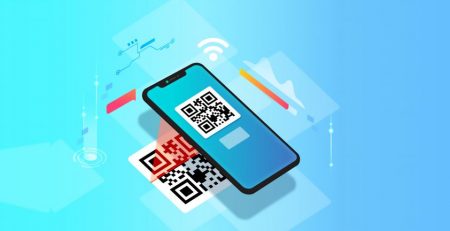What Is An API, And How Can They Benefit Your Business
You may not know this, but the existence and use of APIs have always been there. They work behind the curtains to fill your basket with rich digital experiences. A few examples to draw your attention are the movie ticket you booked online, any blog recipe you shared with your friends on Facebook, and even the fight tickets you booked on Expedia are all reflections of using APIs.
But what role does it play in an organization? Well, from a technical standpoint, APIs are essential tools to enable the capabilities of one computer program to be used by another. In a nutshell, they are a means by which two different programs can communicate with each other.
As per reports, APIs are driving new threads of innovations as it helps companies to double their reach and responses more instantly and represent an answer for the organizations that are currently spending more than $590 billion per year on inducing diversified systems. Therefore, it is clear that APIs are promising signs of cost reduction for all industrial marketers across the globe.
Now to understand the benefits of integrating APIs into business precisely, we have compiled this blog. Here, we will cover API’s definition and the main reasons why this tool matters in organization processes.
What is an API?
API is defined as the application programming interface. It is a software that is based on a set of statements and protocols with an intent to integrate systems and facilitate interaction between software apps by following a series of rules.
The tool enables developers to access and use the existing infrastructure which further makes it possible to interlink two applications. Moreover, an API trades data between various software to automate procedures and build new features in a website or application.
How does an API work?
As mentioned already, the application programming interface works as a bridge between kinds of web or apps and can be built in different programming languages. Apart from being properly developed, an API much have clear and objective documentation to ease implementation.
APIs are also often used in a predefined data format to share insights between systems to achieve integration between them.
Look below to find the most used ones:
- XML (extension markup language)
- YAML (originally YET another markup language)
- JSON ( JavaScript Object Notation)
There’s also a standard for web APIs called REST (representational state transfer) which is a set of rules and definitions for building projects with enticing and well-driven interfaces.
What kinds of APIs are there?
There are three types of APIs when it comes to shared use policies. Let’s discuss that below.
API by use policy:
1. Public or open APIs
Public or open APIs are available for other users or Hire developers to use with minimal restrictions or, in some cases, are fully accessible.
2. Private or internal APIs
Private or internal Private or internal APIS are only accessible by a company’s internal system and are concealed from outside users. They are utilized for the internal growth of the business, maximizing efficiency and service reuse.
3. Partner APIs
Shared APIs within business relationships are known as partner APIs. They need specific permission to use them because they aren’t accessible to everyone.
4. Composite APIs
Composite APIs make use of various data or many service APIs and provide developers access to several endpoints.
API by use case
1. Data APIs
Data APIs facilitate communication between apps and database management systems by giving various SaaS (Software as a Service) databases and providers CRUD (Create, Read, Update, Delete) access to underlying data sets.
2. Operating system APIs
This set of APIs governs the utilization of resources and operating system features by applications. Each OS has its own set of APIs; for instance, the kernel-user space API and kernel internal API in Linux and Windows, respectively.
3. Remote APIs
This group specifies the expectations for app interaction across various platforms. In other words, contrary to what the term implies, the software accesses resources that are not on the device making the request. Remote APIs employ protocols to create connections between two apps that are connected remotely over a network.
4. Web APIs
Web APIs provide data that devices may read and transmit between web-based systems or a customer-server architecture, making this type of API the most popular.

API Protocols
1. Remote Procedure Call (RPC)
Web APIs can adhere to resource exchange norms thanks to RPC. With the help of a program that asks for data (the customer) and another that provides it remotely, this protocol seeks to specify how applications communicate (server).
2. Service Object Access Protocol (SOAP)
This is a simple protocol for transferring structured data in a distributed, decentralized setting. For requests and answers that are sent by applications, their specifications provide syntactic guidelines.
Applications that comply with these requirements can communicate with the system via SMTP or HTTP (Hypertext Transfer Protocol) (Simple Mail Transfer Protocol).
3. Representational state transfer (REST)
REST is an architectural software style that imposes six constraints on the development of programs that use HTTP, particularly online services.
Since many developers find SOAP cumbersome to use since they must write a lot of code to perform a task, it is seen as an alternative to SOAP. REST, on the other hand, adheres to a distinct logic that makes it simpler to access data and resources.
4. GraphQL
The necessity for quicker feature development, a more effective data load, and more mobile flexibility led to the creation of GraphQL.
Customers may provide specifics about the data they require using this API query language, which also makes it easier to add information from other sources.
What are the advantages of API?
Source: https://www.quora.com/What-are-the-advantages-of-API
Knowing the advantages of API development enables you to work with system owners and other stakeholders to update the agency’s systems and realize their enormous potential. Here are a few of these possibilities.
1. Efficiency
Content may be generated once and automatically published or made accessible to several channels by granting API access. Content from your organization is prepared for simple sharing and redistribution to further your goal by reaching more citizens.
2. Greater Range
APIs may be used to disseminate services and information to new audiences and in certain settings that can be adjusted to offer individualized user experiences by enabling anybody to develop a new presentation layer, such as an app, a website, or a widget.
Apps or other websites that users frequently visit can be used to provide information or services about your organization to those who do not visit your website.
3. Utilize government resources
The American people have paid for the data and information that the federal government produces. Data that was previously solely accessible to a select few may now be more widely available thanks to APIs.
4. Automation
APIs enable machines to execute tasks that would otherwise need humans to perform them manually. One straightforward way to accomplish this is to have a single content change spread simultaneously over several different website parts. However, APIs allow your team and your agency to alter workflows more generally, allowing for fewer steps and more efficiency.
5. Apps
For information or a service to be used in mobile apps, API access must be provided. The first stage is granting API access to the elements that would go into a mobile app, offering flexibility in the delivery of information and services, regardless of whether the objective is to enable agency-created applications or third-party apps. As the API provides a shortcut to the second, third, and fourth applications, this is especially important if agencies want to create more than one app.
6. Partnerships
Like-minded companies and non-profits that are interested in leveraging agency information and services to deliver services support each agency’s goal. They accomplish this by ingesting agency content, repurposing it into fresh, valuable products, and displaying agency content to their clients and customers. Any citizen with a brilliant concept may develop the upcoming “killer app” for your community, which can encourage innovation.
7. Integration
Integrating your content into websites and other apps are made simpler by integration APIs. By doing this, you can make sure that the user has a seamless and integrated experience and that the information is accurate and up to date. Not just in locations where your team has had time to update the content, but wherever it might be valuable to them, the information is supplied.
8. Personalization
The capacity to tailor sessions with the information and services that are most helpful to the individual user, businesses, and non-profits.
9. Mashups
By combining your knowledge with that from other sources, the public can better comprehend it. A minor, crucial component of another service might be an agency service or data stream. Consider all the applications for location data, including route planning, service check-ins, and finding the closest gas station. Although it is not the primary function of the program, location data makes it work.
10. Future-Ready
APIs aid in supporting future usage that was not expected when needs evolve. Making data accessible through API can allow data migration that is quicker and simpler, as well as better data quality inspection and cleanup. With the use of APIs, services may be delivered with more flexibility, for instance by employing a service to access a backend system to power a new product.
Everyday Examples of API
The API economy is reaching heights all across the world. And why not? It enables users to share important data and leverage the pool of business functionality between people, apps, and computers.
To understand the usage of API more efficiently, you must go through various common API examples such as logging in to a Facebook account or paying for products online via using PayPal. Without a doubt, such examples are experienced every day and can be implemented by you in your business website.
Look at the below examples of API that you use almost every day in your life:
1. Weather Snippets
The most prevalent example of daily weather data utilization for APIs is. On all platforms, including Google Search, Apple’s Weather, and even your smartphone, rich weather summaries are prevalent.
For instance, if you type “weather + [your location’s name]” into Google, a dedicated box containing the current weather and prediction will appear at the top of your search results. This box is referred to as a “rich snippet.”
Since Google does not currently provide meteorological data, they obtain it from a third party. Google uses APIs to receive the most recent meteorological data and quickly format it.
2. Log-in Using XYZ
Yet another example of using API is the log-in-using platforms such as Google, Facebook, Twitter, or whatever else is considered in social media network functionality that runs on multiple websites. You must be aware and experienced that such websites are easy to use and implement. But do you know how it works?
Well, such social media apps or platforms with such functionalities use APIs to directly help their users to authenticate the log-in process with application programming interfaces each time they log into their accounts.
3. Pay with PayPal
We are pretty sure you use PayPal daily to send or receive money online. That’s another example of using API. Just like you login to any social media platform, pay with PayPal uses APIs to make sure that the end program of the application can only operate on specific data rather than exposing sensitive data or accessing freely unintended permissions.
4. Twitter Bots
Twitter Bots or zombies (another term used for twitter bots) are automated Twitter accounts that are managed and controlled by bots software. They have integrated an API feature to ease the process for users to follow, tweet, or retweet automatically, and also send direct messages abiding by the software instructions.
These bots are empowered by Twitter APIs. Not only does it allow users to take simple actions upon tweeting any particular caption or following a user, but it also helps you interact and converse with the Twitter Bots in case of any fault according to the Twitter account.
5. Travel Booking
Have you ever questioned how a travel agency could compile thousands of flights and locations and even provide the most affordable packages on their websites? Using third-party travel APIs for developers to get flight and hotel availability from providers is, of course, the solution.
Furthermore, if you make a reservation through one of these businesses, they will utilize APIs to verify your trip with the supplier they used to obtain it.

Wrapping Up
In conclusion, APIs are everything in the future.
Businesses are searching for novel methods to engage with customers in the present digital era as consumers want more excellent offerings. Therefore, integrating an API to accomplish this purpose is a key corporate priority.
APIs exist to maximize a company’s potential while also providing innovative network leveraging options for other businesses.
Businesses should thus look for APIs they can easily and smoothly integrate to develop their new era of innovation.
DianApps provides APIs that can assist organizations in a variety of ways. Contact our support to learn more about how DianApps can assist you in using APIs to expand your unique new services.




